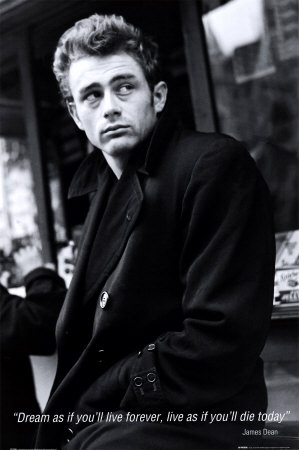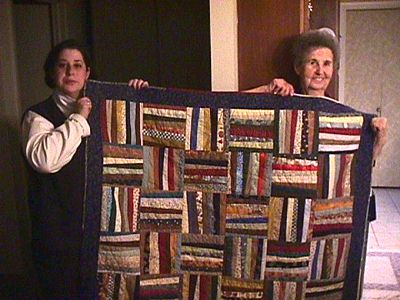Cemeteries get a bad rap. They are seen as places to be avoided, creepy areas that one only visits in times of mourning or in a Buffy the Vampire Slayer episode. If you tell someone that you are visiting a cemetery, they will look at you with concerned eyes, cock their head, and smile while slowly backing away, thinking "Get me the hell away from this person!" Unfortunately, pop culture has ingrained a fear of cemeteries in our minds. Because books and movies use cemeteries as settings for murder and zombie attacks, we have an irrational aversion towards them. American culture is very uncomfortable with death, and cemeteries are the one place where this reality cannot be avoided.
 |
| Buffy chillin at the local cemetery |
In my experience, cemeteries are peaceful places that spark important reflection. Surrounded by so many headstones, the inevitability of death is not frightening, but ordinary. Knowing that so many humans preceded me is humbling. I enjoy looking at the dates on the tombstones and pondering how life has changed since then. I always come to the conclusion that at its core, nothing has changed. Plus, it's fun to look at the weird last names and headstones.
 |
| I love tennis, but not this much |
I realize that some reading this are thinking that I am a cemetery obsessed melancholic who hangs around tombstones on a regular basis. The truth is that I much prefer humans to corpses and have wandered around a cemetery fewer than a handful of times. This post, however, prompted me to add another visit to the list.
Crown Hill Cemetery, located across from the Indianapolis Museum of Art (IMA), is the third largest cemetery in the nation. Its 555 acres are filled with gently rolling hills, expansive trees, and the graves of Indiana's most notable people. President Benjamin Harrison, the founder of Eli Lily Co., and the infamous bank robber John Dillinger are just a few of the recognizable names buried there. Entrance to the park is free and thousands flock to the grounds annually.
 |
| An example of the beauty to be found within Crown Hill |
Because the cemetery gates close at 8 p.m., my 7 p.m. arrival was not well planned. I started off on foot, but quickly realized that if I continued walking, I would be spending the night in the cemetery. I know that I defended cemeteries earlier, but being locked in one for the night is decidedly creepy. All of the lofty ideals of daytime disappear when the moon replaces the sun and every breeze through the trees is a serial killer who wants to slowly disembowel me. With this paranoia in mind, I returned to the parking lot and hopped in the car.
I know that the best way to take in a new environment is on foot, but I still got a lot out of driving through the cemetery. I was able to see a much greater area of the grounds and locate the James Whitcomb Riley memorial. Driving up the hill, extravagant headstones and Grecian sculptures denoted important people.
Once I parked my car at the top of the hill, I was finally able to see the fabled skyline views from the James Whitcomb Riley memorial. Above the treeline the top of the Indianapolis skyline can be viewed. Although the Indianapolis skyline is small and not especially impressive, seeing it from this vantage point made me appreciate it more.
 |
| View from James Whitcomb Riley Memorial |
While I enjoyed the city view, the panoramic view made a greater impression on me. Treetops stretched for miles. It gave the impression that Indianapolis was a city surrounded by a grand forest, an urban area isolated by miles of nature. Until that moment, I had never realized how much I take the green space in Indiana for granted. Sure, there are loads of developed areas, but there is always a park or open area to counterbalance the urban sprawl.
As 8 o'clock approached, I regretted having to leave the cemetery. The expansive trees, quiet evening languor, and miles of varied stone markers made for a setting of quiet beauty. My friend and I encountered very few other people, and a feeling of blissful isolation prevailed. To complete the magical aura, a prancing deer frolicked among the scattered tombstones. (I am not kidding, this actually happened.)
Crown Hill is utterly romantic, and the vista from the James Whitcomb Riley memorial is a must see.
 |
| Statue in the James Whitcomb Riley Memorial |
If you decide to go and have some spare time, the IMA is right across the street. I suggest wandering through the 100 Acres exhibit. It is definitely worth a look, and like Crown Hill, it is free.
 |
| Park of the Laments by Alfredo Jaar |
 |
| "Igloo" where last summer two people lived self sufficiently for a month. Read about it here |




















